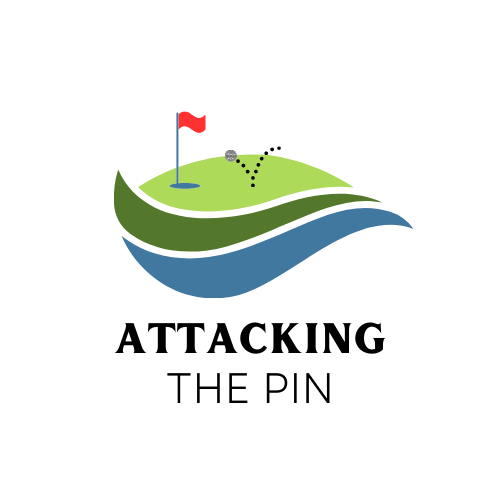Don’t know how to hit a pitching wedge? Do you find that your ball keeps going to the right or the left? If so, don’t worry – you’re not alone. Many golfers have difficulty with this club. In this blog post, we will discuss how to hit your pitching wedge correctly. We will provide detailed instructions and tips that will help you improve your swing and make more accurate shots. Let’s get started!
But before we get started, let’s discuss what a pitching wedge is and how does it work!
Another interesting read: Types Of Golf Wedges
What Do We Mean By A Pitching Wedge?
When it comes to golf clubs, there are many different types of wedges that you can use. But what do we mean when we say “pitching wedge”? And why is it such an important club in your bag?
The pitching wedge is one of the most versatile clubs in your golf bag. It can be used for a wide range of shots, from short pitches and chips to longer lofted shots on the green. Because it is such a versatile club, it’s important to know how to use it effectively.
The pitching wedge has a loft of around 47-50 degrees. This makes it the perfect club for hitting high shots onto the green. It’s also great for hitting approach shots from the fairway.
One of the most important things to remember when using a pitching wedge is to make sure that you strike the ball cleanly. This will ensure that the ball flies high and lands softly on the green. It’s also important to make sure that you don’t hit the ground before the ball, as this will cause the ball to bounce and roll erratically. More on this later in the guide.
Another interesting read: How Long Does It Take To Golf 9 Holes?
Pitching wedges are an essential part of any golfer’s bag, so make sure you have one that you’re comfortable with. With a little practice, you’ll be hitting shots like a pro in no time!
Why Use A Pitching Wedge?
There are a number of reasons why you might use a pitching wedge. For example, you might use a pitching wedge:
(a) when the fairway is obstructed and you need to hit the ball over a tree;
(b) when you are in thick rough and need to get the ball onto the green; or
(c) when you have a long putt to make and want to reduce the distance of the shot.
Pitching wedges are also versatile. You can use them to hit different types of shots, such as:
(a) a high shot that goes a short distance;
(b) a low shot that goes a long distance; or
(c) a shot that curves to the left or right.
No matter what the situation, a pitching wedge can be a useful club to have in your bag. So, if you are not already using one, it might be worth considering adding a pitching wedge to your set.
How To Hit A Pitching Wedge?
There are many factors you need to take into account when hitting a pitching wedge. In this section of the blog post, I will discuss each of these factors and how they can help you improve your swing.
- First, let’s take a look at the club itself. The pitching wedge is designed for golfers who want to hit the ball high in the air. It has a loft of around 47-50 degrees, which is perfect for hitting shots onto the green.
- When you take your stance, make sure that you are positioned correctly. You should be standing close to the ball, with your feet shoulder-width apart. This will give you stability and allow you to swing the club freely.
- Your grip is also important. Make sure you hold the club firmly, but not too tightly. You should feel comfortable and in control of the club.
- Once you have your stance and grip sorted, it’s time to focus on your swing. When you swing the club, make sure that you keep your wrists firm. This will help you hit the ball cleanly and ensure that it flies high in the air.
- Also, make sure that you follow through with your swing. This will help you generate more power and send the ball further down the fairway.
If you can master these basic techniques, you’ll be able to hit accurate shots with your pitching wedge every time!
How To Choose A Pitching Wedge?
When it comes to choosing a pitching wedge, there are a few things you need to take into account. For example, you need to consider:
(a) the loft of the club;
(b) the length of the shaft;
(c) the head size; and
(d) the grip.
Let’s take a closer look at each of these factors.
Loft
The loft is one of the most important factors to consider when choosing a pitching wedge. The loft is the angle between the clubface and the shaft. It’s measured in degrees and typically ranges from 47-50 degrees.
The loft of your pitching wedge will determine how high or low your shots fly. If you want to hit high shots, you will need a club with a higher loft. If you want to hit low shots, you will need a club with a lower loft.
Another interesting read: What Is An Albatross In Golf?
Shaft Length
The length of the shaft is also important to consider when choosing a pitching wedge. The longer the shaft, the more distance you will be able to hit your shots. However, if the shaft is too long it can be difficult to control the club.
The best way to determine the right shaft length for you is to try a few different clubs and see which one feels most comfortable. Remember, you don’t want the shaft to be too long or too short – it should be just right for your swing.
Head Size
The head size of a pitching wedge is also important to consider. The head size is measured in cubic centimeters (cc) and typically ranges from 90-115cc. The larger the head size, the more forgiving the club will be.
If you are a beginner, you might want to choose a club with a larger head size so that you can get used to hitting the ball. If you are a more experienced golfer, you might want to choose a club with a smaller head size so that you can be more precise with your shots.
Another interesting read: How To Clean Golf Clubs
Grip
The grip is the final factor to consider when choosing a pitching wedge. The grip is the part of the club that you hold onto while hitting the ball. It’s important to choose a grip that is comfortable for you and that you can hold onto easily.
There are a variety of different grips to choose from, so it’s worth trying out a few before making your decision. You might want to consider:
(a) a wrap grip;
(b) a ribbed grip;
(c) a corded grip; or
(d) an oversize grip.
No matter which grip you choose, make sure it’s comfortable for you and that you can hold onto the club easily.
Now that you know what to look for when choosing a pitching wedge, it’s time to go out and buy one!
Another interesting read: How Many Wedges Should You Carry?






